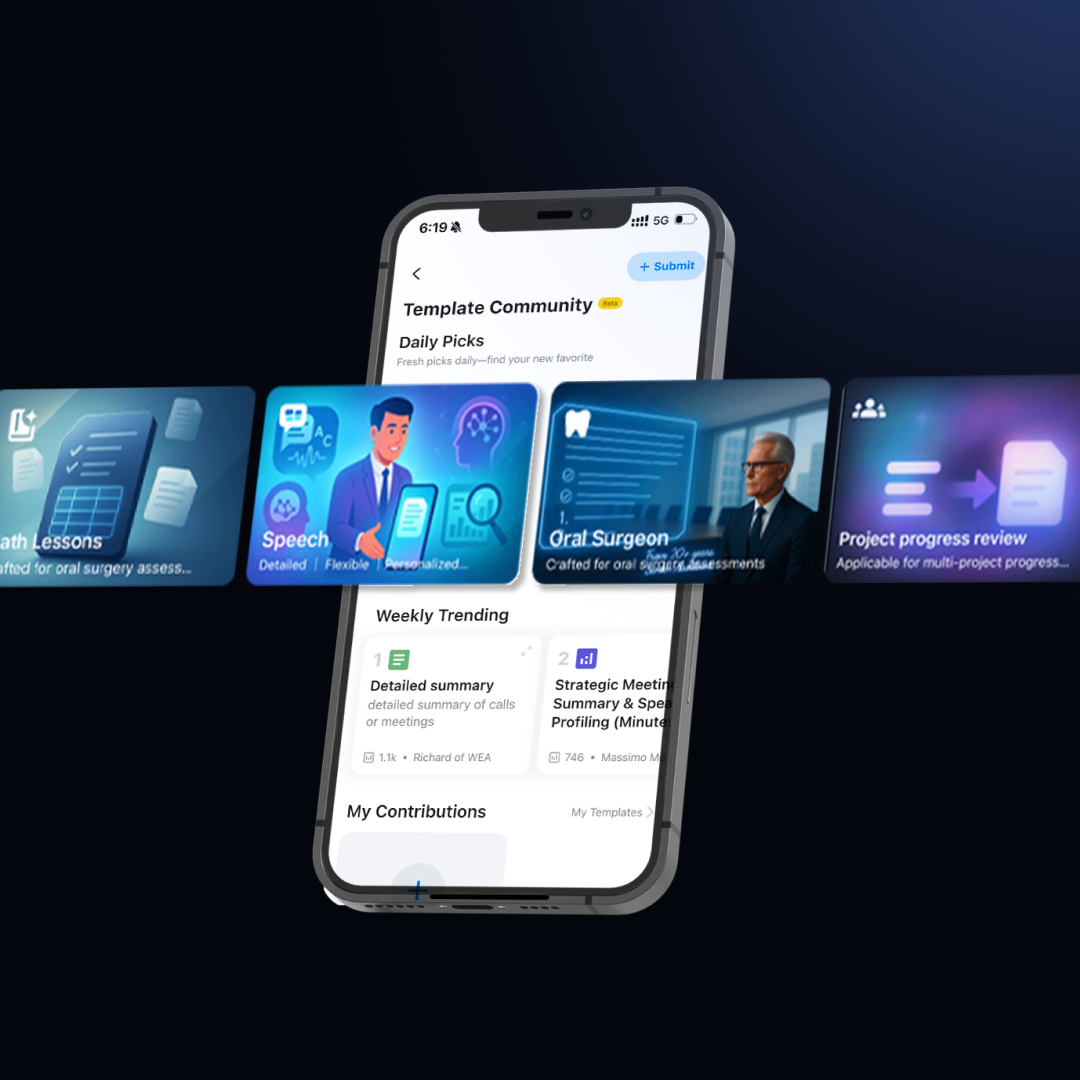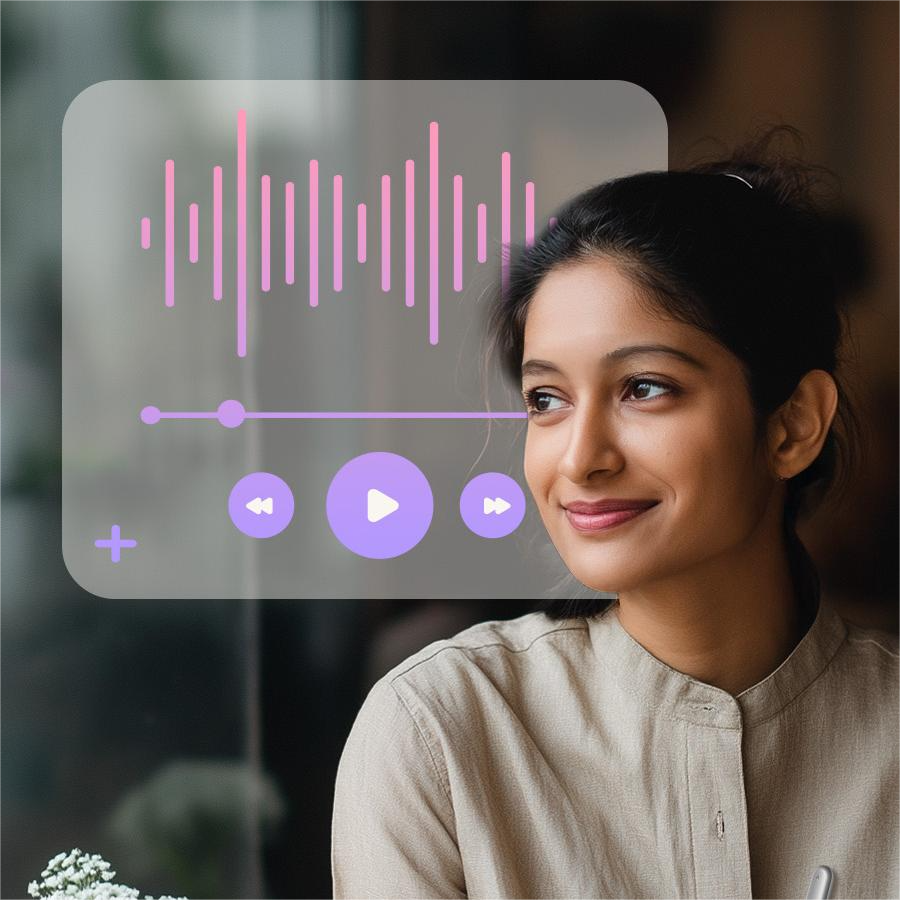Meetings fill up our work days, but taking notes by hand wastes time, and we often miss key details. When teams work across different video platforms like Teams, Zoom, and Google Meet, keeping good records gets harder. Tools like PLAUD now help all kinds of workers—bosses, sales teams, project managers, and marketers—by turning spoken words into written notes, pulling out main points, and listing tasks. PLAUD works on many online conference platforms, uses smart AI to analyze talks, and turns messy conversations into clear, useful information that helps everyone get more done.
- What are the common challenges when creating a meeting summary?
- Who suffers most from poor meeting notes?
- What meeting summary tools are available today?
- How PLAUD makes meeting summaries smple
- How to start using PLAUD for your meetings
- What else can PLAUD do beyond summaries?
- Get better meeting notes in less time
What are the common challenges when creating a meeting summary?
Meetings take up much of our work time, so effective summaries are needed to keep pace with what is discussed. With that many meetings and discussions daily, it's hard to keep everything straight without effective notes.
Too much information to remember
The human brain can hold only so much information at a time. With lengthy meetings or when there are many things to discuss, minute details get lost. For professionals who are taking 8-10 meetings per week, this means that great ideas and decisions are being made for nothing without notes.
The hidden cost of taking notes by hand
Handwritten note-taking takes time away from real work. Taking notes after meetings takes up a lot of time, adding up to many hours each week that team members could spend on more important work. When someone is taking notes, they cannot fully participate in the discussion. Divided attention lowers team participation and creative inputs by members busy writing instead of ideas.
Problems with using multiple meeting platforms
Contemporary teams also employ lots of different tools like Teams, Zoom, and Google Meet—sometimes all in one day. Each program stores recordings and transcripts differently, so it's hard to find them afterward. When meeting data is spread across many places, it's hard to make integrated summaries. Teams waste time searching through lots of different apps and formats just to recreate what happened in their meetings.
Who suffers most from poor meeting notes?
With too many meetings hurting team productivity, some professionals really need tools that create clear, consistent notes no matter where discussions happen.

Busy executives and managers
Top leaders spend almost 23 hours every week in meetings - more than anyone else. They need quick ways to understand key decisions and tasks without reading long notes. Good summaries help managers:
- Track team promises
- Assign tasks more easily
- Keep an eye on different department activities without joining every single meeting
Sales teams handling client information
Sales professionals attend various client meetings each week and must remember specific customer details. Meeting summaries help by:
- Creating reliable customer records
- Improving follow-up quality
- Preventing missed business opportunities
- Allowing teams to build stronger relationships by easily referencing past conversations
Project teams tracking decisions
Project teams depend on clear documentation to stay aligned. Detailed meeting summaries help teams:
- Track changing project requirements
- Record technical decisions
- Monitor timeline shifts
- Spend less time explaining past choices
- Focus more on completing project goals
Marketing teams preserving creative ideas
Marketing discussions generate many creative ideas that can easily be forgotten. Good meeting summaries:
- Capture brainstorming results
- Document campaign feedback
- Record strategic decisions
- Help teams develop clear plans
- Ensure creative ideas aren't lost after the meeting ends
What meeting summary tools are available today?
As teams look for better ways to capture meeting details, different technology solutions have been created.
Built-in video platform tools
Most popular video conferencing platforms now offer basic transcription capabilities:
- Microsoft Teams provides speech-to-text conversion, though it can struggle with multiple speakers and specialized terminology
-
Zoom offers live transcription in its paid plans, with relatively high accuracy for clear English speakers, similar to captions in Microsoft Teams.
-
Google Meet delivers real-time captions and simple notes, but lacks advanced summary features
These features often feel like "bonus tools" rather than complete solutions, with common issues including:
- Inconsistent accuracy: Poor recognition of multiple speakers, accents, or specialized terminology
- Limited functionality: They only transcribe text without deeper analysis like summarization or task extraction
- Lack of structured output: Transcripts are disorganized, making it difficult to quickly identify key points, decisions, and tasks
- Platform dependency: Different platforms have different limitations, making it challenging to manage meeting content consistently
Meeting assistant apps
Some special apps can join your online meetings and help you keep track of what was said. These apps do three main things:
- Write down everything said in the meeting, word by word
- Create quick summaries of what happened
- Let you easily search through meeting notes later
While more capable than built-in tools, these apps still have shortcomings:
- Focus on recording rather than understanding: They can transcribe and summarize, but their understanding of content is shallow, not producing logically clear key points
- Poor task extraction: They can't accurately identify "who needs to do what," requiring manual organization for follow-ups
Advanced AI meeting tools
Unlike basic recording tools, the newest AI meeting helpers like PLAUD work as a true meeting partner that actually understands conversations and helps teams collaborate, fixing the gaps left by other meeting assistants. These smart tools can:
- Pick out the most important topics discussed
- Automatically create a list of tasks for team members to follow up on
How PLAUD makes meeting summaries smple
Ever struggle to remember what was said in your last meeting? PLAUD takes away the stress of note-taking with smart recording tools that do the work for you. With the slim Plaud Note that fits in your wallet or the lightweight Plaud NotePin you can wear, capturing meeting details is as easy as pressing a button. No more missing important points while typing notes. PLAUD turns your recordings into clear summaries that show you exactly what matters, saving you hours of work after meetings.
Highlights what really matters
It's easy to lose sight of what matters when meetings cover a lot of ground. PLAUD chooses the important points and decisions for you in advance so you can immediately see what you need to know. It's like having your own personal assistant who pays close attention and only tells you about the significant details.
Catches all Your to-dos
Ever forget an assignment you were given in a meeting? PLAUD flags every "John will send the report by Friday" moment and keeps a tidy list of who is supposed to do what and when. You'll never forget an assignment or deadline again because it got misplaced in meeting notes.

Understands everyone clearly
Meetings where lots of people talk can be confusing. PLAUD can tell apart the various voices and even holds meetings where people switch languages. Each person's words are labeled clearly, so it's easy to follow who is saying what, even when you go back weeks later and look at the notes.
Saves your time after meetings
The actual work often only starts after a meeting is over - organizing notes, finding action items, and sharing summaries. With PLAUD, it's faster and easier. Simply open the app and tap "Generate", your meeting notes will be organized, ready to use, or shared with others in your team. It only used to take 30 minutes, but now it takes seconds.
Works with all your meeting tools
Regardless of whether you Zoom, Teams, Google Meet, or meet in person, PLAUD feels completely at home. Just take your Plaud Note or your Plaud NotePin with you to record any conversation. Then, have all your meeting notes in one place on your phone or computer - no more digging around across several apps or notebooks for that important conversation.
How to start using PLAUD for your meetings
Using PLAUD is easy. Download the app, connect your device, and you're ready to record meetings. The system creates text and summaries from your recordings, handling everything from start to finish.
Below is an introduction on how to use the Plaud NotePin.
Getting started
First, download the PLAUD app and sign in with your email. If you already have a PLAUD account, you can use the same login for Plaud NotePin.

During your meeting
For video calls, place the NotePin near your computer and press its button to start recording. For in-person meetings, wear the NotePin as a pin, clip, necklace, or wristband—just keep it away from pacemakers. Plaud NotePin can record for up to 20 hours on a single charge, so even lengthy meetings are covered.

Creating your summary
When your meeting ends, open the app to find your recording. Select it and choose from over 30 professional templates for your summary format. The system will automatically identify different speakers, work across 112+ languages, and organize the key points by topic. You can review the summary right away, make any needed edits, and share the final version with your team.
Customizing your results
If you need a specific format for your summaries, you can create a custom template that matches your needs. The AI will follow your template while analyzing the recording, ensuring consistent meeting documentation every time. This saves you from taking notes during meetings and lets you focus on the conversation instead.

What else can PLAUD do beyond summaries?
PLAUD device is a useful tool other than summarizing. Here's what else it can do for you as a busy professional:
Use ready-made templates
The app includes over 30+ different templates designed for different content summarization. These templates help in organizing information in a structured format, whether you're participating in strategic planning meetings, client sessions, or team check-ins.
Collaborate with team members
PLAUD makes it easy to share meeting notes with your coworkers. It's easy to share summaries and takeaways, which can be helpful when you're working on a group project, or someone has missed a meeting. This ensures everyone is in the same loop and has the same information.
Streamline information management
The app saves time as it helps you manage meeting information in an efficient manner. It can read out major points from different conversations and structure them in a logical order so you can focus on decision-making rather than just taking down conversations.
Get better meeting notes in less time
Meeting notes shouldn't dominate your day or have you sacrificing key points. Solutions like PLAUD work seamlessly with all of your meeting apps, turning the conversation into organized, searchable data. PLAUD AI device like Plaud Note or Plaud NotePin captures every word while smart AI handles the rest. Start using a meeting summary solution today and save time, capture every detail, and get your team on track. Try PLAUD and hit the record once to never lose an important point again.
Plaud.ai is a pioneering AI-native hardware and software company that turns conversations into actionable insights with AI devices like Plaud Note and Plaud NotePin. By recording, transcribing, and summarizing real-life conversations, our solutions boost productivity and save time. Designed for precision and flexibility, whether in meetings or on the go, our products empower you to focus on creative, high-value work while AI handles the details.



